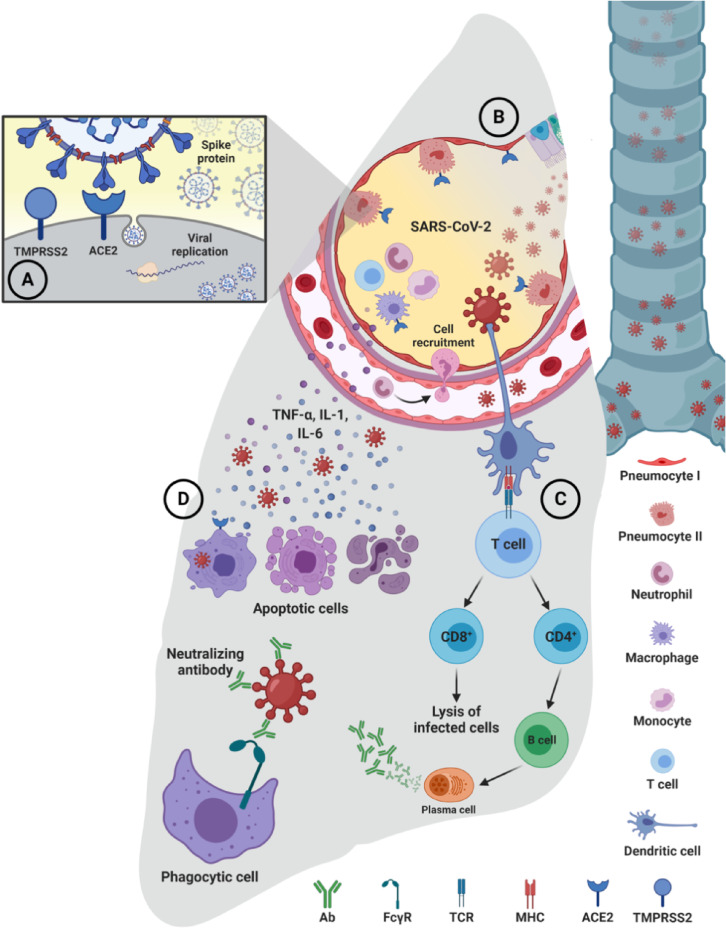Figure 1.
The Immune Response and Immunopathology of COVID-19. (a) The entry of SARS-CoV-2 into cells is mediated by the binding of TMPRSS2 and S-glycoprotein with the ACE2 acting as a receptor that facilitates viral binding to the membrane of the host cells. The virus enters by endocytosis and releases its RNA, replicates and creates new virions that cause a rapid progression of the infection. (b) Bronchial epithelial cells, type I and type II alveolar pneumocytes, and capillary endothelial cells become infected and a response occurs that leads to recruitment of macrophages, monocytes, neutrophils, and cytokine production in response to virus entry. (c) Sub-epithelial dendritic cells recognize the virus antigen and present them to CD4 + T cells that induce the differentiation of B cells into plasma cells that promote the production of virus-specific antibodies. Neutralizing antibodies can interact with phagocytes and NK cells and enhance antibody-mediated clearance of SARS-CoV. (d) A dysfunctional immune response leads to excessive cell infiltration, cytokine storm, inflammation, apoptosis, and multi-organ damage. Ab, antibody; ACE2, angiotensin-converting enzyme 2; FcγR, Fcγ receptor; IL, interleukin; MHC, major histocompatibility complex; TCR, T-cell receptor; TMPRSS2, transmembrane protease serine 2; TNF-a, tumor necrosis factor.

